The Nineteen Thirties proved to be a golden period for V-twin-powered American bikes, and when you’re lucky sufficient to personal one, you’re sitting on a considerable pile of dough. Harley-Davidson’s 1936 EL Knucklehead is regarded by many as the only most fascinating classic HD and the suitable Indian 4 will internet over $200,000 lately. However that’s relative chump change in comparison with a little-known marque named Crocker, as one in all these treasured V-Twins might be price a half-million to the complete seven figures.
Based in 1901 and 1903 respectively, Indian and Harley-Davidson loved tenured dominance over any would-be newcomers to the American market. Nonetheless, Albert Crocker took the chance to be taught from each marques. An engineer by commerce and an achieved rider on the weekends, Crocker discovered himself rubbing elbows with Oscar Hedström and Charles Hendee and secured a job at Indian. Crocker would bounce round for a bit, earlier than ultimately shopping for an Indian dealership in Los Angeles.
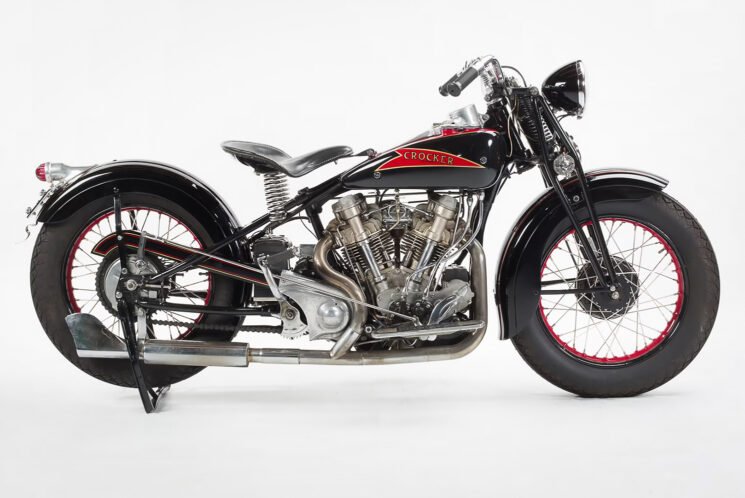
Crocker saved his stressed thoughts busy by growing velocity elements for Indians, working as much as an overhead-valve conversion for the Scout for dirt-track racing. With restricted success, he moved on to speedway racing and constructed his first single-cylinder race bike by 1930. The overhead valve, 499 cc Crocker Speedway proved dominant in AMA racing for a short while, and roughly 30 bikes have been constructed, however nonetheless Crocker had his eyes on one thing larger.
By this time Al had left Indian for good, and he arrange Crocker Motorbike Firm on Venice Boulevard in L.A. with designer Paul Bigsby (sure, the identical Bigsby of Bigsby Electrical Guitars). Crocker and Bigsby started working designing one thing extra profitable than the speedway machines—one thing that might enchantment to the plenty—beginning with a large 61 ci, 1,000 cc V-twin with hemispherical combustion chambers.
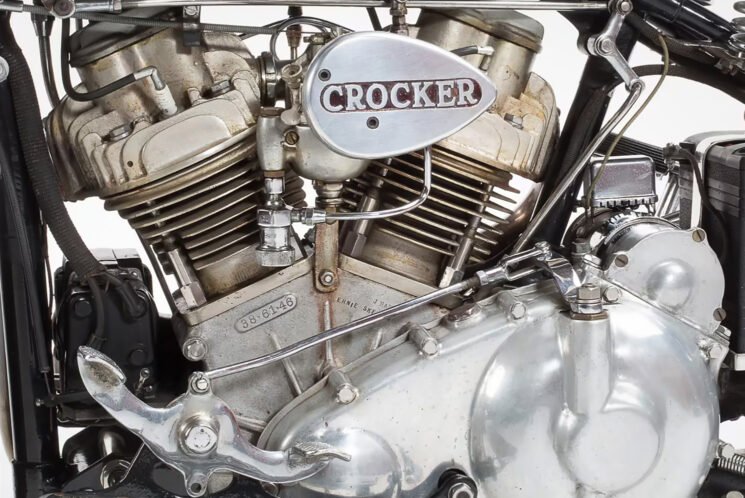
The mechanical particulars of Crocker’s massive twin are slim (and the chassis that carried it), however you’ll be able to’t say the identical in regards to the energy figures they have been attaining. These mag-fired OHV engines are mentioned to have produced 55 to 60 hp. In comparison with the low 40s that the EL Knucklehead and Indian Chief have been making, it turns into clear that Crocker’s bikes have been far forward of their time. Able to over 110 mph flat out, Crocker’s Twin was America’s quickest motorbike and would run with the likes of Vincent and Norton for top-end velocity.
Energy figures apart, the development of Crocker’s Twin was much like that of Harley and Indian of that interval. The inflexible chassis was designed with a girder-type fork and a single downtube and is assembled with forged joints for fit-up. The break up tanks and fenders are eerily harking back to the Indian Chief however with much less aptitude. Moreover, the Crocker Twin appears to be like extra stripped down in its inventory type than its contemporaries, probably contributing to its good-looking 80-pound curb weight benefit.
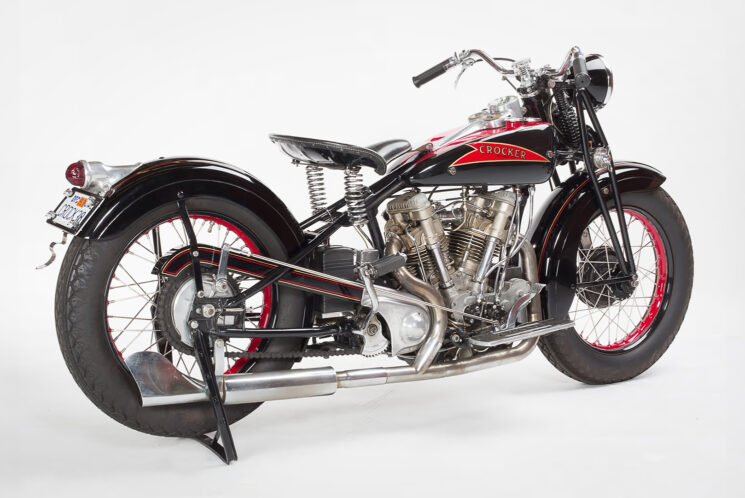
The Crocker Twin went into manufacturing round 1935, however the agency needed to rely closely on suppliers to fabricate elements given the restrictions of the Venice Boulevard facility. Missing the combination of his friends, Crocker’s Twin price 35% greater than the Indian Chief, and that was a troublesome promote through the Nice Melancholy. Unable to promote his design to Indian, manufacturing of the Crocker Twin ended round 1940 after roughly 200 bikes have been constructed. Crocker shifted his focus to scooters for the subsequent couple years earlier than abandoning bikes and falling from the pages of historical past.
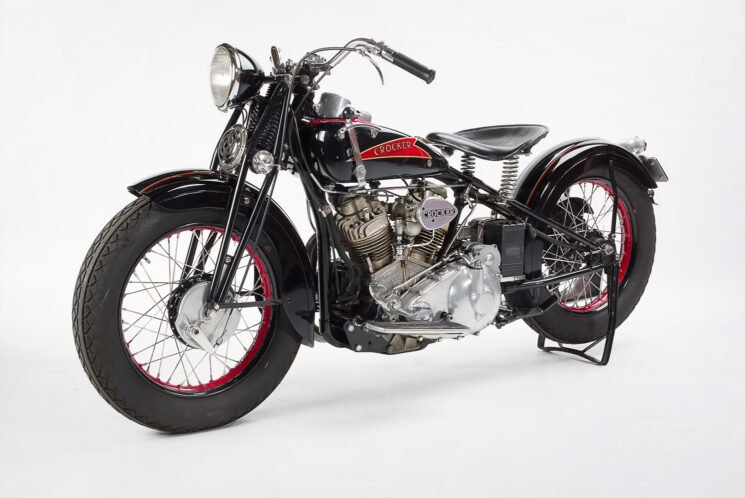
Efficiency and obscurity have been sort to the Crocker marque within the ensuing many years, and an unique Crocker Twin will command a number of the highest hammer costs an American V-twin can obtain. The early ‘small-tank’ bikes (1936 to 1939) most likely command the very best values, however the pattern dimension is so small that any first rate Crocker delivers paralyzing sticker shock.
Lot R727 is an distinctive instance, a extremely documented 1938 small-tank Twin, set to cross the block in February at Mecum’s Las Vegas 2025 sale. The bike comes from the gathering of City S. Hirsch III and was as soon as owned and restored by the famed Ernie Skelton. Skelton’s title is synonymous with old-school American iron, and there was most likely no larger authority on the model than him. The PTO facet of the crankcase nonetheless wears his hand-punched inscription.
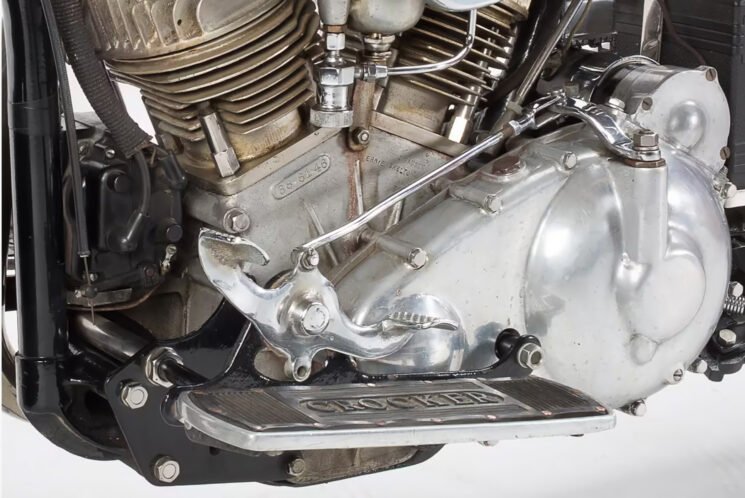
The forty sixth bike constructed, there are maybe no extra distinguished examples of the Crocker Twin on the market. Whereas it’s promoting at no reserve, it definitely gained’t come low cost.
Supply: Mecum
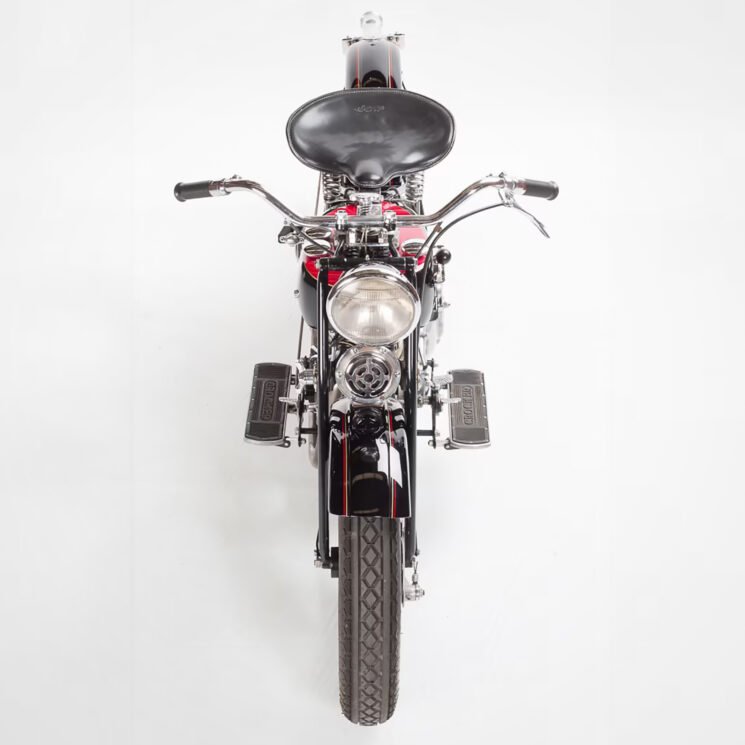
Trending Merchandise











